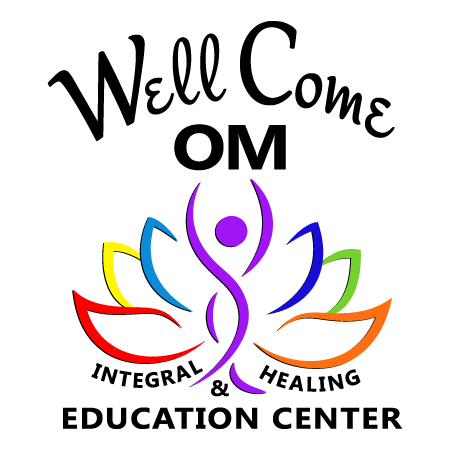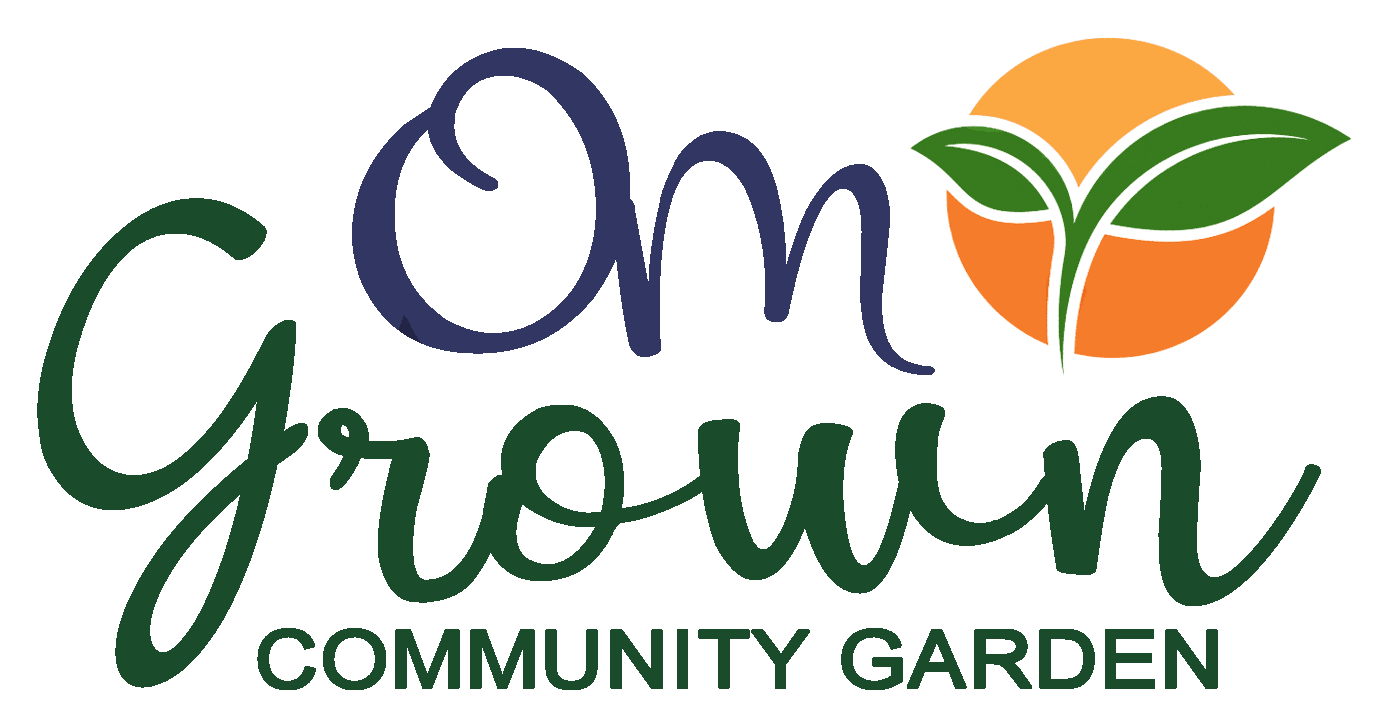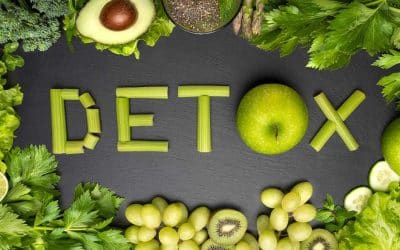Breast health is more than a medical concern; it’s an integral part of overall well-being that deserves your full attention. Whether you’re a mother nourishing new life or simply a woman looking to embrace a healthier lifestyle, understanding how to love and care for your breasts can be empowering.
In this comprehensive guide, we dive deep into the anatomy, function, and cultural significance of breasts, while also providing actionable steps for self-care, cancer prevention, and optimal nutrition. Read on to unlock the secrets of breast wellness and empower your journey toward lifelong health.
Table of Contents
Understanding the Basics: What Exactly Are Breasts?
Breasts are truly miraculous organs, almost as if designed by some grand planner. They serve multiple purposes that benefit both individuals and society at large. Let’s delve into what makes them so special.
Nurturing the Next Generation
At the core, breasts are life-giving organs. When a woman becomes a mother, her brain automatically secretes oxytocin to prepare her breasts for nursing. As the infant begins suckling, more oxytocin is released, triggering the lactiferous ducts to produce milk. This intricate process is more functionally relevant for mothers, although fathers can experience emotional connections through other means.
Not Just for Women: A Balanced Perspective
It’s essential to recognize that men also have breasts, albeit with less tissue and different functionalities. Unlike women, men’s breasts are not naturally designed for infant feeding. This leads to fewer instances of breast-related diseases for men, thanks to a lesser overall composition of breast tissue.
Breasts in Art and Culture
Throughout history, breasts have been a focus in various forms of art, from fashion and dress to paintings, drawings, sculptures, poetry, and even musical compositions. They’ve held aesthetic and symbolic value across ages, testifying to their multidimensional significance.
A Closer Look: Structure of the Breasts
Internal Composition
The internal structure of the breasts is an intricate ensemble, comprising a complex network of glands, fibrous tissue, and fatty tissue. These components are supported by a rich network of blood vessels, ensuring the proper nourishment and functioning of the breast tissue. A typical female breast hosts around 20 lobules of glandular tissues. These lobules are themselves further segmented into sublobules, which radiate like spokes of a wheel around the central nipple area. This arrangement facilitates the production and delivery of milk during lactation periods.
Arteries, Veins, and Lymph
Breasts are more than just collections of glands and tissues; they are biological systems sustained by an intricate network of arteries, veins, and lymph nodes. This vascular and lymphatic system delivers essential nutrients and oxygen to the breast tissue while also playing a crucial role in immune function. The presence of lymph nodes, in particular, aids in the drainage of waste materials, ensuring that the breasts remain a healthy and functional part of the body.
The Changing Landscape
The architecture of the breasts isn’t static; it undergoes significant transformations at different stages of a woman’s life. From puberty and menstruation to pregnancy, breastfeeding, and finally menopause, each life stage imparts its own unique set of characteristics to the breast tissue. These changes affect not only the physical appearance—shape, size, and weight—but also the functional aspects of the breasts, such as glandular activity and sensitivity. Understanding these changes is vital for maintaining breast health through various life stages.

The Miracle Liquid: Breast Milk
Production Capability
During the peak of lactation, an adult female has the remarkable ability to produce up to 1.2 liters of breast milk every single day. This volume can further increase in cases where a mother is nursing twins or multiple babies. This biological marvel not only provides essential nutrients but also ensures that mothers can meet the varying nutritional demands of their newborns.
Breast Composition
Breast milk is a nutritional powerhouse, intricately composed to meet the needs of a growing infant. It consists of about 85% water, which helps keep the baby hydrated. Besides, it contains 3.3% fat, 6.8% lactose, and trace amounts of vital proteins like casein and lactalbumin. These elements work in synergy to provide a comprehensive nutritional profile that commercial formulas strive but often fail to mimic.
A Gift of Immunity
What makes breast milk truly exceptional is its ability to impart passive immunity to the infant. It contains a variety of antibodies, particularly immunoglobulin A (IgA), which plays a crucial role in bolstering the infant’s fledgling immune system. These antibodies help protect against infections and illnesses during the first few months of life, offering an invaluable layer of natural defense.
Self-Care Rituals: Your Monthly Breast Check & Routines
Ladies, let’s be real—health doesn’t happen by accident. It’s crucial to be conscious of the need to offer your breasts the loving care they deserve. Make this your foundation of self-care.
Know Your Breasts
The Importance of Feeling
Understanding your breasts on a tactile level is a crucial component of breast care. Regular self-massages not only promote lymphatic drainage but also help you become more familiar with the natural texture and shape of your breasts. This awareness can be invaluable for early detection of any abnormalities. Additionally, it’s advisable to wear garments that are free from constraining wires and metals, as these can impede blood flow and potentially cause discomfort or other issues.
Monthly Exams: A Must-Do
Make it a point to perform a self-exam at least once a month. This allows you to understand your breast’s unique anatomy and enables you to identify any changes quickly. Schedule it on a specific date each month to ensure you don’t forget, and consult with a healthcare provider if you notice any anomalies.
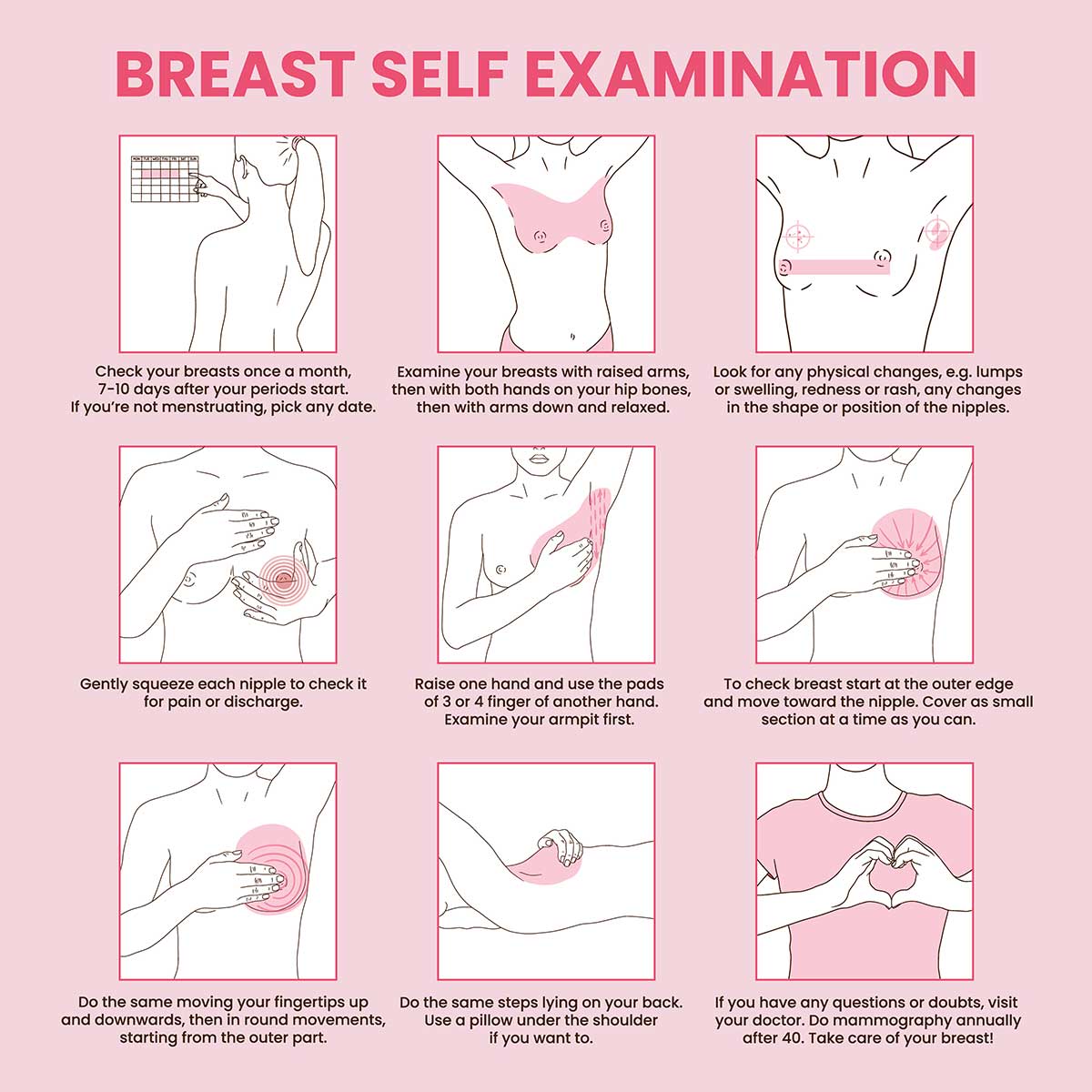
The Right Fabric Choices
Choosing the correct fabric for your undergarments can make a world of difference in breast health. Synthetic fabrics can suffocate the skin, leading to sweat accumulation and possible skin irritations. Whenever possible, opt for breathable, natural fabrics like cotton or organic silk. These materials not only provide superior comfort but also allow for better air circulation, thereby promoting overall breast health.
Nourish Your Skin, Naturally
Taking good care of your breast skin is an often-overlooked aspect of breast health. When it comes to moisturizing or softening your breast skin, opt for natural oils like coconut or almond oil, or creams that boast minimal, chemical-free ingredients. These not only nourish the skin but also avoid the harmful effects of synthetic chemicals, which can be absorbed into the bloodstream. Your skin—and by extension, your breasts—will be grateful for this extra layer of natural care.
A Different Perspective on Breast Cancer Prevention
While mammograms have long been the go-to recommendation for early detection of breast issues, they should not be the only preventive measure you consider. True prevention starts with your day-to-day lifestyle choices, from diet and exercise to stress management. Focusing on these aspects can significantly reduce the risk factors that contribute to breast health issues.
Mindset Matters
The power of a positive mindset is often underestimated in discussions about health. Moving away from a fatalistic view that you’re “doomed” for breast cancer can genuinely make a difference. Studies suggest that a positive outlook can bolster your immune system and enhance your body’s ability to heal, so don’t neglect your mental well-being when considering your overall health.
Pregnancy and Breast Health
Food Choices
Expecting mothers should pay special attention to their diet, particularly focusing on nourishing foods that are organic, fresh, and prepared with love. A balanced diet rich in essential nutrients can support both the mother and the baby, providing the groundwork for healthy breast tissue and overall wellness.
Radiation and You
It’s particularly important to be mindful of radiation exposure during pregnancy. Keep cell phones, laptops, and other wireless devices away from your body—especially your breasts—to minimize the risks associated with electromagnetic radiation.
For All Women: Diet and Environmental Concerns
Cooking Methods
The way you cook your food can have significant implications for your breast health. Conventional methods like using a microwave, deep frying, or barbecuing can degrade the quality of nutrients and even introduce harmful substances into your meals. Instead, opt for healthier cooking techniques such as steaming, sautéing, or using an air fryer. These methods not only preserve the integrity of the food but also minimize the formation of potentially harmful byproducts.
Kitchenware Choices
Your cooking implements can be as impactful as the food you cook. It’s crucial to avoid plastics in bottles, storage containers, and utensils, as they may leach harmful chemicals into your food or water. Similarly, steer clear of Teflon-coated or aluminum cookware, which can also introduce toxins. Safer alternatives include ceramic, stainless steel, or glass cookware, which are not only more environmentally friendly but also less prone to chemical leaching.
Your Relationship with Meat and Dairy
While they can be part of a balanced diet, meat and dairy products often contain hormones that could adversely affect your breast health. Therefore, it’s beneficial to limit your consumption of these foods, particularly those that are not organic or hormone-free. If you must consume meat and dairy, opt for products that are organic, grass-fed, and hormone-free to minimize exposure to harmful substances.
Hormones: Handle with Care
The use of synthetic hormones for contraception or hormone replacement therapy should be approached with caution. Devices like IUDs or oral contraceptives can have a range of side effects, some of which may relate to breast health. Whenever possible, consider alternative methods that don’t rely on synthetic hormones. If you must resort to hormonal solutions, aim for the shortest duration possible and consult a healthcare provider for tailored advice.
Reducing Risk: Proactive Steps for Breast Cancer Prevention
The Five-Step Plan from “Busting Breast Cancer”
According to Dr. Susan Wadia-Ells, Ph.D., author of “Busting Breast Cancer,” the following five steps are pivotal for prevention:
- Keep Your Mitochondria Healthy: These cellular powerhouses are key players in both the development and healing of cancer.
- Maintain Optimal Vitamin D Levels: Aim for 60-100 mg/dl to ensure better breast health.
- Choose Hormone-Free Birth Control Options: Skip the birth control drugs that might increase your risk.
- Think Beyond Mammograms: While they are the conventional choice, they may not always be the safest.
- Daily Brain and Body Cleanse: Keeping your internal systems clean is vital for long-term health.
“Cancer is a metabolic, environmental and emotional disease.”Nasha Winters & Jess H. Kelley, The Metabolic Approach to Cancer
Unspoken Truths: What You Should Know
The Metabolic Basis of Cancer
Pioneering experts in the field like Dr. Thomas Seyfried and Nobel laureate Dr. James Watson have posited that cancer is fundamentally a metabolic disease, with mitochondrial dysfunction at its core. This perspective suggests that the root cause of cancer lies in metabolic imbalances, often facilitated by mitochondrial defects. Despite the compelling evidence supporting this metabolic theory, mainstream federal agencies and research organizations have largely chosen to focus on genetic factors, which account for a mere fraction—less than 5%—of cancer diagnoses. This discrepancy underscores the need for a more comprehensive approach to understanding, treating, and ultimately preventing this pervasive disease.
The Changing Narrative
Dr. James Watson, Nobel laureate for his co-discovery of DNA’s double helix, has shifted his stance on cancer. He advocates for a paradigm shift away from a solely molecular biology-centric approach, instead emphasizing the critical role of biochemistry. Watson contends that by focusing on the biochemical interactions within the body, we can gain a more nuanced and holistic understanding of cancer as a disease. This perspective challenges the conventional research models, pushing for a more integrated methodology that could open new avenues for treatment and prevention.
Mammograms and Radiation
Conventional wisdom often treats mammograms as the gold standard for breast health, regarded as an essential tool in early detection and subsequent treatment of breast cancer. However, it’s crucial to be aware that mammograms involve radiation exposure, and research indicates that this radiation can actually linger in the breast tissue. This lingering radiation exposure could potentially pose risks, particularly with frequent mammograms over an extended period.
Therefore, while mammograms have their place in a comprehensive approach to breast health, they shouldn’t be your only line of defense. Alternative diagnostic methods like thermography, ultrasound, and MRI can offer additional layers of understanding without the risk of radiation exposure.
Emotional Well-being and Breast Health
Your emotional well-being plays a more critical role in your physical health than you might realize, particularly when it comes to areas governed by the heart chakra, including your breasts.
Negative emotional states like pain, suffering, and chronic stress can manifest physically, disrupting the energy flow around the heart chakra. This energy imbalance can, in turn, affect the overall health of your breasts, potentially making them more susceptible to various issues including soreness, inflammation, or even more severe health conditions.
It’s crucial to recognize the interconnectedness of emotional and physical health, and to take steps to cultivate emotional well-being as part of a comprehensive approach to maintaining breast health.
Other Risk Factors You Should Know About
Historical Roots of Breast Augmentation
The popularity of breast implants skyrocketed in the post-World War II era, a trend largely influenced by evolving societal beauty standards and preferences. During the U.S. occupation of Japan, it was observed that local prostitutes sought to cater to servicemen’s preferences for larger breasts, thus pioneering the early stages of breast augmentation through injections of silicon or paraffin.
As decades passed, this cosmetic trend seeped into mainstream plastic surgery, making breast implants a booming industry. However, this rise in popularity has not been without its drawbacks. Numerous studies have surfaced over the years, highlighting the potential health risks and complications associated with breast implants—ranging from infection and rupture to more severe consequences like the increased risk of certain types of cancer. Thus, what began as a trend fueled by societal preferences has led to a multitude of health issues, prompting reconsideration and caution in the realm of breast augmentation.
Environmental Toxins
Environmental factors play a significant role in the risk of developing breast cancer, and among these, certain culprits stand out. Radioactive emissions from nuclear power plants are a concerning element, as they can contaminate air, water, and food supplies, leading to prolonged exposure that has been shown to increase the risk of cancer, including that of the breast.
Electromagnetic fields (EMFs) emitted from wireless technology such as cell phones, Wi-Fi routers, and other wireless devices are another noteworthy contributor. Numerous studies suggest that constant exposure to these EMFs could have cellular-level impacts that may disrupt normal breast tissue behavior, potentially triggering carcinogenic effects.
Additionally, toxic waste from various industrial processes introduces a plethora of hazardous chemicals into our environment—chemicals that can accumulate in the body and interfere with hormonal regulation, thereby significantly increasing the risk of breast cancer.
The confluence of these environmental toxins establishes a complicated landscape that significantly heightens breast cancer risk and calls for immediate attention and mitigation strategies.
Everyday Items and Breast Health
While environmental toxins from industrial sources and technologies receive much of the attention in discussions around breast cancer risk, it’s crucial to recognize that everyday objects can also contribute to a toxic breast environment. Take, for instance, home furnishings made with synthetic materials that may release volatile organic compounds (VOCs) into the air. These compounds can be harmful when inhaled and may have longer-term effects on breast tissue.
Similarly, exposure to artificial light at night, especially the blue light emitted by electronic devices, can disrupt the body’s production of the hormone melatonin, which has been shown to have protective effects against cancer.
Artificial items like plastic containers, which can leach endocrine-disrupting chemicals, also add to the toxic load our bodies—and specifically our breasts—have to process.
All of these seemingly benign objects can incrementally contribute to a toxic environment that increases the risk of breast diseases, including cancer. Acknowledging this allows us to make smarter choices in our day-to-day living.
The Power of Choice
At the end of the day, the power of prevention truly starts with you, lying squarely in your hands. Your lifestyle choices—everything from the food you eat to the products you use—play an integral role in safeguarding your breast health.
But it doesn’t stop there; your environmental decisions, such as reducing exposure to harmful chemicals and opting for natural, breathable fabrics, also contribute significantly to your well-being.
These are conscious, proactive steps that you can take every day to protect yourself, and they can go a long way in minimizing risks. Therefore, it’s crucial to educate yourself and make informed choices. When you take control of your environment and lifestyle, you are not just protecting your breasts; you’re investing in your long-term health and well-being.
Remember, your choices today shape your health outcomes tomorrow, making you the primary guardian of your breast health.
“We are educated and know the facts and not the propaganda or myths.”Dr. Maria Scunziano-Singh (Dr. M)
Nourish to Flourish: Foods for Optimal Breast Health
Historical data shows an intriguing relationship between diet and breast health. For instance, Japanese women saw a 2-3 times increase in lung, breast, and colon cancer from 1950 to 1975, a period in which milk consumption increased 15-fold. In contrast, Okinawans, who are renowned for their longevity, have lower sugar intake and consume more green-yellow vegetables and fish.
The Good Fats: Nutritional Powerhouses
Why Good Fats Matter
Beneficial fats, such as those abundantly found in coconuts, avocados, olives, and macadamia nuts, play a vital role in supporting and promoting optimal breast health by providing essential nutrients and reducing inflammation. Here are some of the best sources:
- Coconuts
- Avocados
- Olives
- Macadamia Nuts
- Walnuts
- Wild-Caught Fish
- Organic Soybeans
Veggies and Roots: The Nutrient-Rich Arsenal
The Cruciferous Connection
Cabbage, brussel sprouts, and broccoli are not just excellent choices for your diet; they come loaded with an array of beneficial nutrients like antioxidants, fiber, and essential vitamins, all of which contribute to maintaining and improving breast health.
- Broccoli & Broccoli Sprouts
- Kale
- Collards
- Brussels Sprouts
- Cabbage
Allium Family and More
Don’t overlook the culinary and medicinal powerhouses like onions, leeks, and garlic, which are all part of the allium family. These aromatic vegetables offer not just a burst of flavor to your dishes but also bring with them a host of nutritional benefits, including antioxidant properties and immune-boosting elements that are beneficial for breast health.
- Onions
- Leeks
- Garlic
Power Roots
Incorporate power roots like turmeric, ginger, and beets into your diet, as they should not only make their way onto your plate for culinary delights but also for their multitude of health benefits, including anti-inflammatory properties and rich nutrient profiles that are beneficial for overall well-being, including breast health.
- Turmeric
- Ginger
- Beets
Spice It Up: A Pinch for Health
The regular inclusion of aromatic spices such as cloves, cardamom, and cinnamon in your daily meals can offer you additional health benefits, from antioxidant properties to aiding digestion, making them valuable allies in your journey toward optimal breast health.
- Cloves
- Cardamom
- Cinnamon
- Black Pepper
- Quality Salt
The Fruity Defense: Low Glycemic Choices
Lemons, limes, and grapefruits are not only refreshing but are also particularly useful for fighting free radicals and toxins, thanks to their rich vitamin C content and antioxidative properties, making them a must-add to your diet for enhanced breast health.
- Lemons
- Limes
- Grapefruits
Eating Smart: The Art of Mindful Consumption
It’s not just what you eat that holds significance; the way you consume your meals is equally crucial for overall well-being. Keep these pointers in mind for a healthier, more mindful eating experience that can also contribute to better breast health.
- Don’t overeat.
- Sit down after preparing your meal.
- Chew slowly and completely.
- Stop eating when you start to feel full.
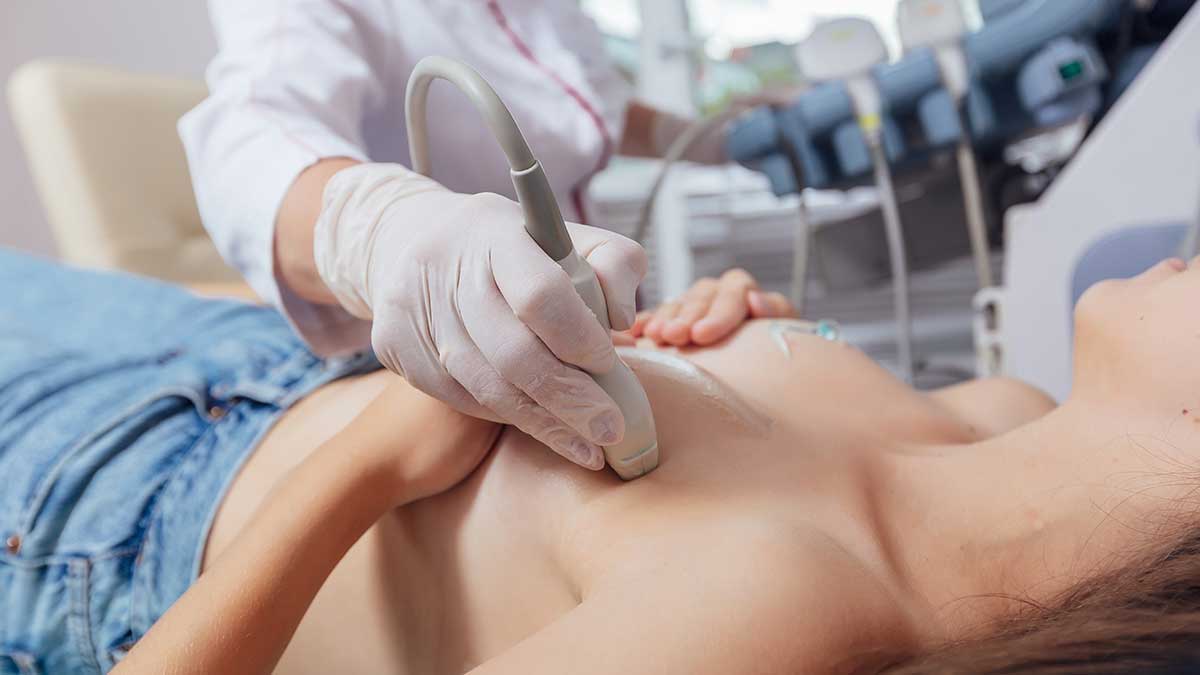
Final Thoughts: Empowering Your Journey to Breast Health
As we reach the end of this comprehensive guide, it’s crucial to emphasize the actionable steps that can make a real difference in your breast health journey. Monthly self-breast exams are a must; it’s an act of self-love and an essential part of staying aware of any changes.
When it comes to diagnostics, opt for thermography, ultrasound, or MRI over mammograms. These offer a more nuanced picture without the risk of radiation. Weight loss can be vital if obesity is a concern, and if you smoke, quitting is non-negotiable. As far as vaccines, especially mRNA/DNA-based ones, the risks may outweigh the benefits, so exercise caution.
Alcohol doesn’t have a place in a breast-healthy lifestyle, and neither do toxic relationships. Replace them with relaxation, fun, and quality time with loved ones. The sun, your natural friend, provides not just light but also essential Vitamin D. Aim for 15-30 minutes of sunlight exposure daily, and consider supplementing with plant-based Vitamin D3 with K2.
In closing, let’s remember what’s most important: Loving your breasts and prioritizing their health is not a luxury—it’s a necessity.
- Rethinking Your Sip: The Unfiltered Truth About Alcohol - December 22, 2025
- Consumer Beware: The Ease of Deception in the Food Industry - October 28, 2025
- The Modern Plague of Addiction: Reflections on a Painful Subject - July 29, 2025
